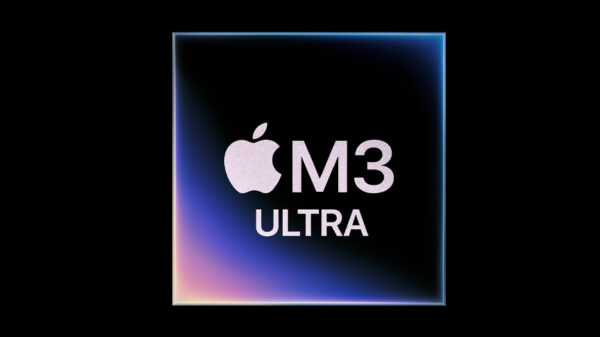Kaspersky’s researchers have uncovered the third case of a firmware bootkit in the wild. Dubbed MoonBounce, this malicious implant is hidden within a computer’s Unified Extensible Firmware Interface (UEFI) firmware, an essential part of computers, in the SPI flash, a storage component external to the hard drive. Such implants are notoriously difficult to remove and are of limited visibility to security products.
Having first appeared in the wild in the spring of 2021, MoonBounce demonstrates a sophisticated attack flow, with evident advancement in comparison to formerly reported UEFI firmware bootkits. Kaspersky researchers have attributed the attack with considerable confidence to the well-known advanced persistent threat (APT) actor APT41.
UEFI firmware is a critical component in the vast majority of machines; its code is responsible for booting up the device and passing control to the software that loads the operating system. This code rests in what’s called SPI flash, a non-volatile storage external to the hard disk. If this firmware contains malicious code, then this code will be launched before the operating system, making malware implanted by a firmware bootkit especially difficult to delete; it can’t be removed simply by reformatting a hard drive or reinstalling an OS. What’s more, because the code is located outside of the hard drive, such bootkits’ activity goes virtually undetected by most security solutions unless they have a feature that specifically scans this part of the device.
MoonBounce is only the third reported UEFI bootkit found in the wild. It appeared in the spring of 2021 and was first discovered by Kaspersky researchers when looking at the activity of their Firmware Scanner, which has been included in Kaspersky products since the beginning of 2019 to specifically detect threats hiding in the ROM BIOS, including UEFI firmware images. When compared to the two previously discovered bootkits, LoJax and MosaicRegressor, MoonBounce demonstrates significant advancement with a more complicated attack flow and greater technical sophistication.
The implant rests in the CORE_DXE component of the firmware, which is called upon early during the UEFI boot sequence. Then, through a series of hooks that intercept certain functions, the implant’s components make their way into the operating system, where they reach out to a command and control server in order to retrieve further malicious payloads, which we were unable to retrieve. It’s worth noting that the infection chain itself does not leave any traces on the hard drive, as its components operate in memory only, thus facilitating a fileless attack with a small footprint.
While analyzing MoonBounce, Kaspersky researchers uncovered several malicious loaders and post-exploitation malware across several nodes of the same network. This includes ScrambleCross or Sidewalk, an in-memory implant that can communicate to a C2 server to exchange information and execute additional plugins, Mimikat_ssp, a publicly available post-exploitation tool used to dump credentials and security secrets, a formerly unknown Golang based backdoor, and Microcin, malware that is typically used by the SixLittleMonkeys threat actor.
The exact infection vector remains unknown, however, it is assumed that the infection occurs through remote access to the targeted machine. In addition, while LoJax and MosaicRegressor utilized additions of DXE drivers, MoonBounce modifies an existing firmware component for a more subtle and stealthier attack.
In the overall campaign against the network in question, it was evident that the attackers carried out a wide range of actions, such as archiving files and gathering network information. Commands used by attackers throughout their activity suggest they were interested in lateral movement and exfiltration of data, and, given that a UEFI implant was used, it is likely the attackers were interested in conducting ongoing espionage activity.
Kaspersky researchers have attributed MoonBounce with considerable confidence to APT41, which has been widely reported to be a Chinese-speaking threat actor that’s conducted cyberespionage and cybercrime campaigns around the world since at least 2012. In addition, the existence of some of the aforementioned malware in the same network suggests a possible connection between APT41 and other Chinese-speaking threat actors.
So far, the firmware bootkit has only been found in a single case. However, other affiliated malicious samples (e.g. ScrambleCross and its loaders) have been found on the networks of several other victims.
“While we can’t definitely connect the additional malware implants found during our research to MoonBounce specifically, it does appear as if some Chinese-speaking threat actors are sharing tools with one other to aid in their various campaigns; there especially seems to be a low confidence connection between MoonBounce and Microcin,” adds Denis Legezo, senior security researcher with GReAT.
“Perhaps more importantly, this latest UEFI bootkit shows same notable advancements when compared to MosaicRegressor, which we reported on back in 2020. In fact, transforming a previously benign core component in firmware to one that can facilitate malware deployment on the system is an innovation that was not seen in previous comparable firmware bootkits in the wild and makes the threat far stealthier. We predicted back in 2018 that UEFI threats would gain in popularity, and this trend does appear to be materializing. We would not be surprised to find additional bootkits in 2022. Fortunately, vendors have begun paying more attention to firmware attacks, and more firmware security technologies, such as BootGuard and Trusted Platform Modules, are gradually being adopted,” comments Mark Lechtik, senior security researcher with the Global Research and Analysis Team (GReAT) at Kaspersky.
In order to stay protected from UEFI bootkits like MoonBounce, Kaspersky recommends:
- Provide your SOC team with access to the latest threat intelligence (TI). The Kaspersky Threat Intelligence Portal is a single point of access for the company’s TI, providing cyberattack data and insights gathered by Kaspersky over more than 20 years.
- For endpoint level detection, investigation and timely remediation of incidents, implement EDR solutions, such as Kaspersky Endpoint Detection and Response.
- Use a robust endpoint security product that can detect the use of firmware, such as Kaspersky Endpoint Security for Business.
- Regularly update your UEFI firmware and only use firmware from trusted vendors.
- Enable Secure Boot by default, notably BootGuard and TPMs where applicable


















































































































